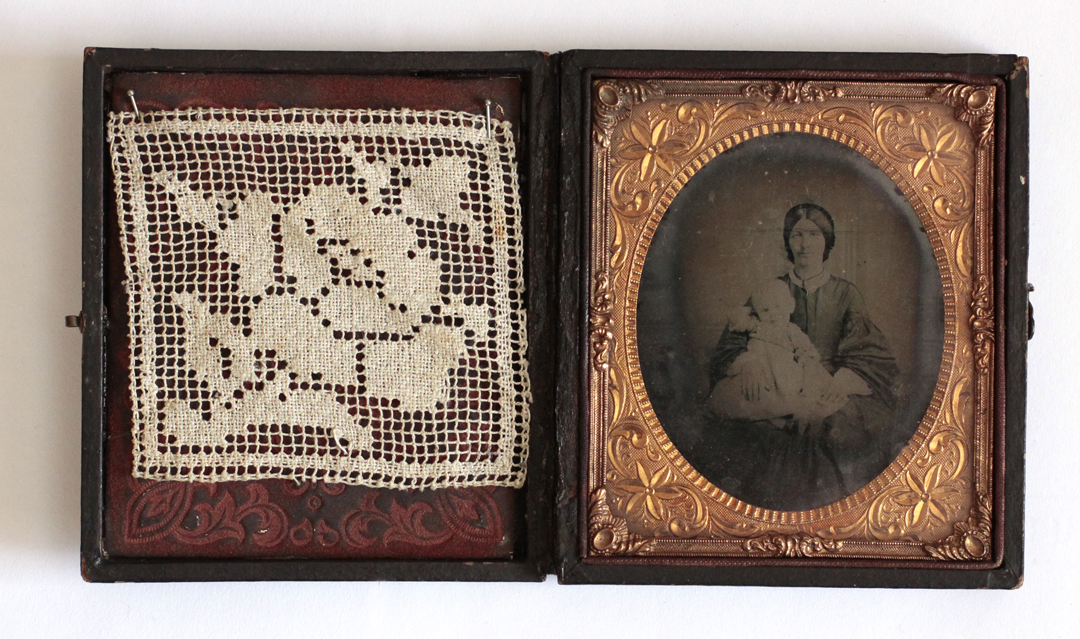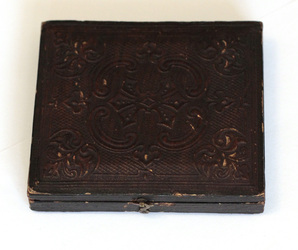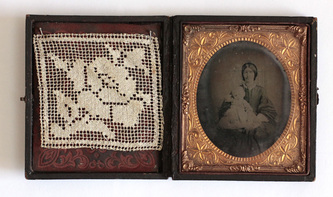|
Yesterday I posted a link to a great site dedicated to mourning photography. I dont think that this is a mourning photograph. But what strikes me about this wonderful little cased Ambrotype is the lace pinned in the verso cover. It is stained and stiff with age. It is pinned in with very sturdy pins. I wonder, and there is not way to know, if this little piece of lace is from the dress of the child in the photo. It would make sense given the practice of often pinning or sewing some form of memento into the the verso that is connected to the person in the image. Often a lock of hair was sewn into the cover. This practice is just fascinating to me. Why is the photograph insufficient as a reminder that there needs to be an addition of something more physical? Is it precisely that...physical?
0 Comments
 I've had a few posts recently on some of the photographic oddities that I have collected over the past few years. There are a number of really nice sites out there that cater to these peculiar corners of photo history. Mourningphotography.com is one such place. For those who are a bit squeamish, this might not be the site for you. But then again there is something quite stunning in the images and in the phenomena of mourning photos. As you look through the photos there you will begin to see certain motifs arise. In the photo offered here, a reduplication of a photo is made. The young girl holds a photo of the deceased person...the photo becomes a surrogate for the once living. It is a tangible reminder of that person. Here is a similar tin-type from my own collection. Tomorrow I will post another from my own collection with an interesting variable.  This is one of my favorite photo pieces. After you examine enough historical photos and a little more research, you begin to recognize certain motifs that seem to pop up again and again. Often studio portraits involve someone holding a book or a hat as a prop. Others have a curious addition of another photograph. Sometimes they are sitting on a table. Sometimes they are held. Sometimes they sit on an empty chair. I find these objects fascinating for many reasons, but one being the re-duplication of an image...an early form of re-photography. But why did this motif emerge? In some it seems like the photographed subject is merely contemplating the image, but others have a much emotive tale. Frequently the photograph is used as a substitute or surrogate reminder of someone who is no longer living. Were we able to zoom in more to the photo in this child's hands we may well find it to be an image of a sibling or more likely her father who is now deceased. These photos fall into an fascinating niche of photo history often called "mourning photography". |
Ryan StanderArchives
January 2018
Categories
All
|







 RSS Feed
RSS Feed
